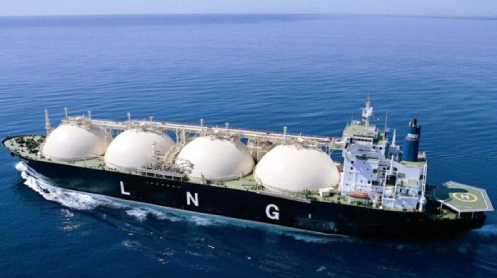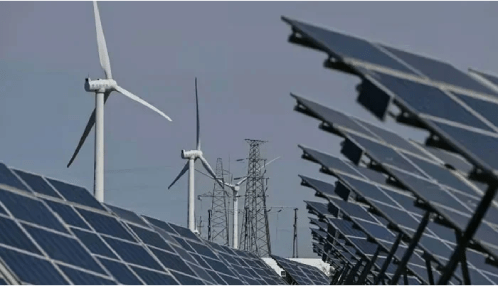LAUNCESTON: Asia’s imports of liquefied natural gas (LNG) are poised to drop to the lowest in nearly two years in February, while Europe’s are set to surge to the second-highest on record.
The weakness in Asia shows buyers are shunning expensive spot cargoes, with prices at least 50% higher than what they were this time last year.
A milder-than-usual winter across much of North Asia has also dampened demand, and allowed European buyers to bid for cargoes as part of efforts to re-stock the continent’s depleted inventories.
Asia, the top-importing LNG continent, is on track to see arrivals of 20.7 million metric tons of the super-chilled fuel in February, according to data compiled by commodity analysts Kpler.
This is down from January’s 24.59 million and 22.67 million in February last year.
It is also the lowest monthly total since April 2023, according to Kpler.
In contrast, Europe’s February imports of LNG are expected to come in at 11.81 million tons, in line with 11.84 million from January.
These two months are the third-and fourth-highest on record, but if February’s imports are calculated on a per day basis, they become the second-highest behind April 2023.
Europe is increasingly turning to LNG after supplies from Russia via pipeline crossing Ukraine ended at the start of January, which added to the loss of pipeline gas from Russia after Moscow’s February 2022 invasion of its neighbour.
Much of Europe’s increased demand for LNG is being met by the United States, which overtook Australia in 2023 to become the biggest exporter of the fuel.
Europe’s imports from the United States are set to reach 6.53 million tons in February, down from the record 6.84 million in January.
However, on a per day basis, February imports are an all-time high and are almost three times above the 2.30 million tons Europe bought from the United States in July last year.
The increasing reliance of European buyers on US LNG may help the continent argue its case with new US President Donald Trump, who is ramping up his tariffs on trading partners as part of efforts to get them to buy more from the United States.
High prices
Europe’s LNG demand is also helping drive the spot price for the fuel to levels close to the European benchmark TTF , which ended at 46.06 euros per megawatt hour on February 21, equivalent to $14.12 per million British thermal units (mmBtu).
This is only slightly higher than the $14.00 per mmBtu that spot Asian LNG ended at in the week to February 21, which was down the 14-month high of $16.10 the previous week.
Asia’s LNG imports hit record, but supply surge keeps price muted: Russell
Prices for spot cargoes in Asia eased as the peak winter demand passed, but also as the high prices that have prevailed since November curbed demand.
This price dynamic is on display in China, the world’s biggest buyer of LNG, with imports in February expected to fall to the weakest in two years.
February arrivals are slated to be 4.99 million tons, down from 6.05 million in January and 5.82 million in February last year, according to Kpler data.
The Asian spot price has held around $14 per mmBtu since mid-November, a level that makes it difficult for Chinese utilities to sell at a profit.
The impact of a mild winter is more of a factor in Japan, the world’s second-biggest LNG importer, with February arrivals expected to be 5.79 million tons, down from 6.74 million in January and below the 6.07 million from February 2024.
With winter demand passing, it’s likely that demand in North Asia for LNG will ease, with the risk that the usual seasonal dip is larger than usual given the prevailing high prices.
If Europe’s LNG demand remains elevated as the continent works to refill storages, spot prices are likely to remain high enough to deter Asian buyers.
The views expressed here are those of the author, a columnist for Reuters.







